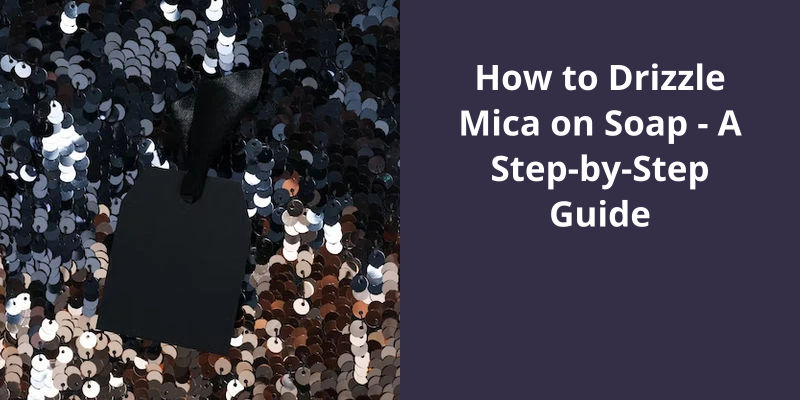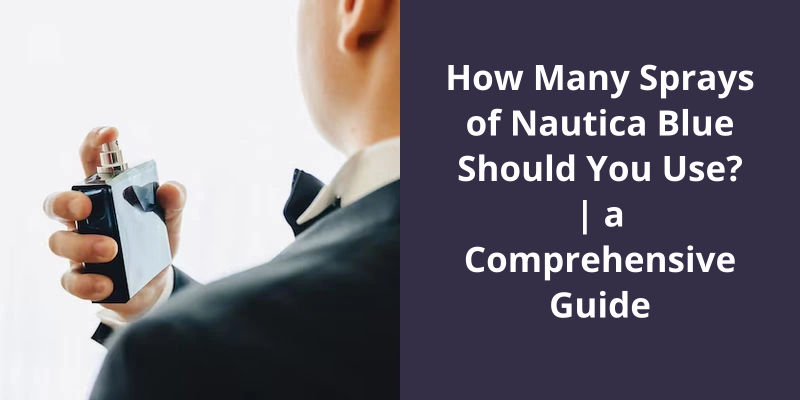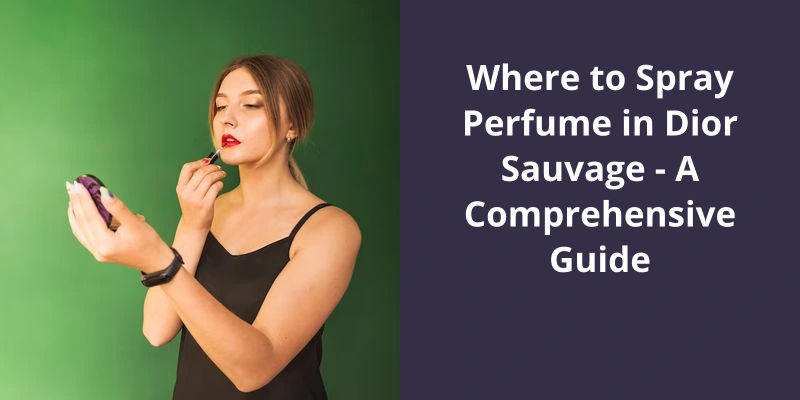Drizzling mica on soap involves few simple steps. First, you need to prepare your soap and make sure that it’s still at a slightly soft stage to ensure the mica will stick. Then, mix your chosen mica powder with a bit of rubbing alcohol in a small container. Stir until you obtain a consistency similar to ink. Afterwards, use a pipette or dropper to collect the liquid mica mixture, then gently drizzle it over the surface of your soap. Depending on the design you want, you can leave it as it is or use a toothpick to create swirls or other patterns. Let the soap sit until it’s completely hardened and the mica has adhered to it properly.

How Do You Paint Mica on Soap?
When it comes to painting mica on soap, there are many different methods that you can use depending on the type of soap that youre working with. For cold process soaps, you’ll want to mix 1 teaspoon of mica with 1 tablespoon of oil until the mixture is completely smooth and free of clumps. This can be done using a small mixing bowl and a whisk or a fork. Once the mica and oil are blended together, you can begin slowly adding small amounts of the mixture to your soap until you achieve the desired color.
You can always add more of the mixture later if you need to, but it’s much harder to take away color once youve added too much. Take your time and don’t rush through the process, as this will help you to achieve a professional-looking finished product.
These substances can help to make the mica more vibrant and long-lasting, while also improving it’s adhesion to the surface of the soap. However, be sure to use these substances sparingly and carefully, as adding too much can cause the soap to become too wet or sticky.
You may want to use multiple shades of mica to create a layered or ombre effect, or you may choose to focus on a single color to create a bold and dramatic statement. No matter what approach you take, be sure to experiment and have fun with the process – after all, making soap should be a creative and enjoyable experience.
By using the right materials and techniques, you can create a beautiful and long-lasting finished product that’s sure to impress your friends and family.
Tips for Choosing the Right Type and Quality of Mica for Soap Painting
- Choose cosmetic-grade natural mica powder that’s FDA approved for skin contact
- Look for mica powders that are finely milled to prevent clumping and create smooth application
- Consider the particle size of mica when selecting a color for your soap painting – larger particles may create a glittery effect, smaller particles will produce a matte finish
- Check the colorfastness of mica by testing it in a small amount of your soap base before adding it to the entire batch
- Avoid using mica powders that contain large amounts of other fillers or additives, as this can affect the quality and performance of the final product
If you’re looking to add some shimmer and color to your soap, then mica powder might just be the perfect ingredient for you. Not only are micas completely safe to use in soap, but they also come in an endless variety of colors and metallic glimmers that can transform your homemade soap into a work of art. But before you go ahead and start mixing mica powder into your soap, let’s take a closer look at how to use it effectively and safely.
Can You Put Mica Powder in Soap?
Theyre versatile and can be used alone or blended to create custom shades. Additionally, mica powders offer something that many other soap colorants cant – a natural shimmer. This is especially desirable for those creating glitter or glittery soaps.
But the question remains – can mica powder be safely used in soap? The answer is yes, with some caveats. These powders are typically finer in texture, making them easier to mix into the soap base.
This ensures that the color evenly distributes throughout the soap and doesn’t clump. Some soapers even recommend using a small amount of a liquid soap base to help the colorant blend more smoothly.
Some colors may lose their shimmer when exposed to a more alkaline or acidic environment. To combat this, it’s important to use a pH-balanced soap base and to test your colors in small batches before making a larger batch.
Just keep in mind proper dispersal techniques and pH considerations for the best results. As with all soapmaking ingredients, it’s important to do your research and purchase from reputable sources to ensure the highest quality product.
Tips for Using Mica Powder in Soap, Such as How Much to Use and How to Properly Disperse It
Mica powder can be added to soap to give it shimmer and color. To use mica powder in soap, first mix it with a small amount of oil or glycerin to create a slurry. Add the slurry to your melted soap base and stir well to disperse the powder evenly. Use about 1/2 teaspoon of mica powder per pound of soap base, but you can adjust the amount based on your preferred level of shimmer and color intensity. Be sure to blend the powder well to avoid clumps and streaks in your finished soap.
It’s important to understand the properties of different pigments when crafting products, especially if they need to be water-based. In the case of micas, they’re oil-soluble and don’t distribute evenly in water-based products like room sprays, shampoos, or body washes. Let’s take a closer look at why this is and explore alternative options.
Can Mica Go in Water?
This is because mica is hydrophobic, meaning it repels water and doesn’t mix well with it. Therefore, it isn’t recommended to add mica to water-based cosmetics or personal care products.
One option is to pre-mix the mica with a small amount of oil or glycerin before adding it to the water-based product. The oil or glycerin will help solubilize the mica and prevent it from clumping or settling. Another option is to use water-soluble mica, which is specially designed to be dispersible in water-based formulations.
It’s important to note that the use of mica in cosmetics and personal care products is subject to regulation by the FDA.
In addition to being used in cosmetics and personal care products, mica is also used in a variety of industrial applications, including paint, coatings, plastics, and electronics. In these applications, mica is typically mixed with other ingredients to create a stable dispersion that can be easily incorporated into the final product.
If you do want to use mica in a water-based formula, be sure to pre-mix it with an oil or glycerin or use a water-soluble form of the pigment.
Getting creative with soap-making is an incredible way to add a unique dimension to the process. Adding colors is one way to do just that. Whether you want to create a soap that matches a room’s decor or simply add a touch of personality, the possibilities are endless. But how exactly do you add color to soap? Let’s find out.
How Do You Add Color to Soap?
Adding color to soap is a fun and creative way to enhance the aesthetic appeal of handmade soap products.
When adding pigment to soap, it’s essential to ensure that it’s evenly dispersed to avoid clumping or uneven color distribution. One way to achieve this is by mixing the pigment with glycerin or isopropyl alcohol before adding it to the soap base.
These are pre-made colorants that come in solid form, which can be easily shaved or grated into the melted soap base to achieve a desired hue.
It’s important to note that the amount of pigment or colorant added to the soap base will determine the intensity of the color. For a more subtle color, less pigment should be used, while a more vibrant color requires more pigment. It’s always a good idea to start with a small amount of pigment and gradually add more until the desired color is achieved.
In addition to natural and synthetic pigments, some soap makers use micas and other cosmetic-grade powders to add color to soap. These can be mixed with glycerin or isopropyl alcohol before adding to the melted soap base to achieve a wide range of colors. However, it’s important to use only cosmetic-grade ingredients when making soap to ensure the safety and quality of the final product.
Mixing the colorant with glycerin or isopropyl alcohol helps ensure even color distribution, while the amount of pigment added determines the intensity of the color.
The Best Type of Colorants to Use for Different Types of Soap Bases, Such as Melt-and-Pour or Cold Process Soap.
- Natural colorants such as herbs, spices, clays, and botanicals work well with both melt-and-pour and cold process soap bases.
- Oxides and ultramarines are synthetic colorants that work well in melt-and-pour soap because they don’t morph or bleed.
- Micas are another popular synthetic colorant that work well in melt-and-pour soap, but may morph or bleed in cold process soap.
- Liquid colorants specifically formulated for soap are a good option for both melt-and-pour and cold process soap bases.
- Fragrance oils can also add color to soap, but their use should be limited as they may affect the overall quality of the soap.
Source: How to Color Handmade Soap BrambleBerry
Conclusion
With the proper application technique of adding 1 teaspoon of mica to 1 tablespoon of oil and blending until smooth, you can achieve a beautiful and professional-looking result. Incorporating this technique into your cold process soaps can elevate them to the next level and offer a unique and customized product for your customers. Always remember to add the mica mixture gradually until you reach your desired color.





